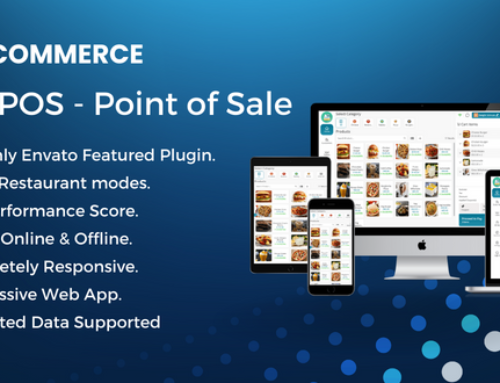A web-based software program called Multi-School Management System is intended for administering the routine tasks of educational institutions like schools, colleges, and universities. A wide range of administrative and academic chores, including student enrollment, fee administration, attendance tracking, test management, and more, can be automated using its complete collection of features and functionalities. The system is easy to use, extremely flexible, and accessible from any internet-connected device. Educational institutions all around the world use Multi-School Management System, which has a solid reputation for dependability, scalability, and performance.

Features of Multi School Management System
Dashboard
Admin Panel Statistics: A dashboard that presents a summary of significant data on the management system.
Theme
Control Theme: Enables the administrator to control the system’s appearance by picking and altering several themes.
Language
Manage Language: Enables the administrator to control the system’s language by choosing and altering different languages.
Administrator

General Setting: A module for managing system-wide parameters, including the name, logo, time zone, and more.
Manage School: Allows the administrator to add, update, or delete schools while managing many schools within the system.
Setting for Payment: A plugin for managing payment settings, including configuring currencies, payment gateways, and other things.
Academic Year: Allows the administrator to manage academic years by adding, changing, or deleting academic years.
ACL User Role: A module for managing user roles, including adding, changing, and deleting roles as well as giving them rights.
Role Permission: Enables the administrator to give rights to various user roles.
Control User: Gives the administrator the ability to handle user accounts, including altering user responsibilities and adding, modifying, or deleting users.
Control Feedback: A module for managing user feedback, including seeing, responding to, and removing feedback.
Back-up database: Enables the system administrator to back up the system database for later use.
Opening Time: Allows the system’s administrator to determine the system’s opening and closing times.
Template
Template for SMS: A module for controlling the system’s SMS templates.
Email Template: Enables administration of the system’s email templates.
Front Office
Visitor Purpose: Allows the administrator to control how visitors to the system are used for various purposes, like attending events and visiting schools.
Visitor details: A section for managing data on system users, including names, addresses, phone numbers, and other details.
Call Record: Allows the administrator to monitor calls made inside the system.
Postal Dispatch: Enables the administrator to control postal mail delivery.
Postal Receive: A module to control how postal mail is received by the system.
Human Resource
Manage Designation – This feature enables the administrator to create and manage designations or job titles for staff and teachers in the school administration system.
Manage personnel – This functionality allows the administrator to administer employee records, including personal information, contact information, job title, and department.
Teacher
Department – The administrator can use this tool to establish and oversee several administrative, financial, and academic departments inside the institution.
Manage the teacher – The admin can use this feature to manage a teacher’s records, including their name, contact information, position title, and area of expertise.
Lecture in class – Teachers can make and maintain lecture notes for various classes and subjects using this tool.
Rating – With the help of this function, students can give feedback on their educational experience and rate their instructors, classes, or courses.
Manage Leave
Type of Leave – With the use of this tool, the administrator is able to generate and manage the various sorts of leaves that staff members and teachers may take, such as maternity leave, casual leave, or sick leave.
Application for Leave – The school administration system’s leave application feature enables staff members and teachers to request time off.
Application in Waiting – This function displays a list of open leave requests that are awaiting admin approval.
Application accepted – This function displays a list of leave requests that have been authorized.
Application Declined – This function displays a list of applications for leaves that have been declined or rejected.
Academic
Class – The administrator can build and oversee several classes in the school administration system using this capability.
The Section – A, B, or C-style portions of a class can be created and managed by the admin using this capability.
Subject – This tool allows the administrator to establish and administer various school courses such as mathematics, science, or literature.
Syllabus – The administrator can use this functionality to upload and maintain the course and subject schedules.
Material – This feature enables teachers to upload and administer study materials, including books, notes, and presentations, for various classes and subjects.
Live Class – Students who are unable to attend in-person classes can participate in live online classes thanks to this feature.
The assignment – Teachers can create and assign homework to students for various classes and subjects using this function.
Submission – Through the school management system, this feature enables students to submit their homework assignments online.
Lesson Plan
Lesson – The ability to manage and design lessons for various courses and disciplines is provided for teachers via this function.
Topic – Teachers can develop and control many themes within a lesson using this tool.
Curriculum Timeline – For each class and subject, this feature displays a timeline of the lessons and subjects that have been studied.
Lesson Status – Each lesson and topic’s status is displayed, including whether it has been finished, is still being worked on, or hasn’t even begun.
Lesson Plan – Teachers can make and maintain lesson plans for various courses and disciplines using this capability.
Class Routine
Control the class routine – The admin can design and control the class schedule or routine for each class and subject using this capability.
Guardian
Control Guardian – With the help of this function, the administrator can handle details about the parents or guardians of students, such as their contact information and emergency contacts.
Manage Student
Student type – Based on their traits or qualities, this module enables classifying students into many groups.
List of students – All pupils enrolled in the school are listed here, along with basic information about them such as name, section, and class.
Enroll Student – With the aid of this tool, administrators of the school can register new pupils and add their information to the database.
Bulk Admission – This feature permits administrators to submit multiple students to the system simultaneously, thereby saving time and effort.
Online Admission – Students can use this option to submit an application for enrollment to the school from any location with an internet connection thanks to the online admissions procedure it offers.
Student Activity – This module keeps account of the actions that students take when using the system, such as signing in, submitting assignments, and taking tests.
Attendance
Student attendance – This function lets teachers take attendance for each class, and the system keeps records for each student.
Attendance of teachers – Teachers’ attendance can be tracked and kept on file by school officials thanks to this function.
Attendance of Workers – Other school personnel, such as support and administrative staff, can have their attendance tracked using this module.
Email for absence –When a student is absent, this function notifies parents or guardians through email.
SMS for absence – This function notifies guardians or parents of absent students through SMS.
Generate Card
Setting up your ID card – This module offers settings for creating and printing employee, teacher, and student ID cards for schools.
Admit Card Setting – This module offers options for creating and printing student admit cards so they can take exams.
ID card for teachers – Teachers’ ID cards may be printed using this capability.
ID card for employees – Other school personnel can print ID cards using this function.
ID for students – Students’ ID cards may be printed using this capability.
Admit card for students – The ability to print admission tickets for students to take tests is provided by this function.
Online Exam
Instruction – This module provides a platform for instructors to create and share instructional content with their students, such as video lectures and written notes.
Question Bank – The ability to construct a bank of questions for use in tests and quizzes is provided by this feature for administrators and teachers.
Online Exam – This module gives you an online platform for giving tests, with features like a timer, multiple-choice questions, and essay questions.
Exam Results – This function shows the outcomes of the tests that students took, together with the grades and rankings received.
Manage Exam
Exam Grade – Administrators can use this module to assign grades for each exam depending on the results.
Exam Term – Exam terms, including those for midterm and final tests, can be defined by administrators using this tool.
Schedule – This function gives teachers and students access to a calendar of classes, tests, and other school events.
Suggestion – Teachers can give students feedback and recommendations regarding their academic achievement using this module.
Attendance – This tool provides student, teacher, and other employee attendance records.
Exam Mark
Result card – This function presents each student’s scores in a manner like a report card.
Mark sent via email – This function emails parents or guardians the exam results that pupils received.
Mark sent by SMS – This feature transmits exam scores to parents and guardians via text message.
Sending a result through email – This function emails each student’s parents or guardians with their test results.
SMS result sent – This feature transmits SMS notifications of each student’s test results to their parents or guardians.
Manage mark – This module enables administrators or teachers to control the grades that each student receives on tests and other forms of evaluation.
Exam term result – This function shows the outcomes of each exam term, together with the grades given and the marks earned by students.
Final exam results – The final exam results are shown here, along with the overall grade and points earned.
Merit List – A list of students ranked according to merit, or their academic performance, is called a merit list. It is a ranking of pupils determined by their performance on tests, projects, or other academic pursuits.
Mark Sheet – Student grades are recorded on a mark sheet. It includes the student’s name, registration number, course name, subject grades, and GPA. Educational institutions produce mark sheets at the conclusion of a term or year.
Promotion
Manage the Promotion – It’s easy to move a student to the new academic year or to the next level of graduation.
Certificate
Type of Certificate – Create a variety of certificates, including participation and merit certificates.
Produce a certificate – Create student certificates using the chosen certificate template.
Inventory
Supplier – Control supplier information such name, address, and contact details.
Warehouse – Maintain information about the capacity, name, and location of the warehouse.
Category – Product categories can be made and managed.
Product – Create and maintain product information, including name, cost, and stock.
Purchase – Record and keep track of purchase orders, noting the vendor, the item, the amount, and the cost.
Sale – Maintain an order book that details the buyer, item, amount, and cost of each sale.
Issue – Manage problems like returned or damaged goods.
Asset Management

Vendor – Manage the name, location, and contact information for each vendor.
Store – Manage store specifics like name, address, and capacity.
Item – Create and maintain assets including furniture, computers, and equipment.
Purchase – Keeping track of asset acquisitions, including the supplier, item, amount, and cost.
Issue – Manage asset-related issues including replacement, upkeep, or disposal.
Library
Book – Organize book information like the author, publisher, ISBN, and title.
A library user – Manage library users, including staff, teachers, and students.
Issue and Refund – Keep track of and manage book returns and difficulties.
E-book – Organize e-books, including the file format, author, and title.
Transport
Vehicle – Take control of vehicle specifications including capacity, manufacture, and model.
Transport vehicle – You can control the student transportation vehicles that are used by using this module. Vehicles can be added, modified, deleted, and given varied paths.
Transport Member – Manage the transportation of staff, teachers, and students.
Hostel
Manage the hostel – You can control the school’s hostel system using this module. Hostel rooms can be added, modified, deleted, and assigned to students.
Manage Room – Control room characteristics including size, capacity, and amenities.
Member of the Hostel – Manage the staff, teachers, and other residents of the hostel.
Message – Compose and administer messages, such as inbox, sent, draught, and trash.
SMS & Mail – Manage and send SMS and email messages.
Complain
Complaint Type – Create and manage different types of complaints, such as technical, administrative, or academic ones.
Control complaints – Keep track of complaints, including who made them, their nature, and their status.
Announcement
Notice – Create and manage announcements for events like test dates, canceled classes, and job openings.
News – News on academic accomplishments, future events, or changes to policies can be created and managed.
Holiday – Create and oversee national, religious, and cultural holidays.
Scholarship
Candidate – Manage scholarship applications, including students and applicants.
Donor – Manage scholarship donors, whether they be companies, organizations, or people.
Scholarship – Manage scholarship information such as name, category, and amount.
Event – Manage occasions like conferences, meetings, or seminars.
Payroll
Grade of Salary – You can specify several pay tiers for your employees using this module. The experience, credentials, and skills of your employees can be used to produce various wage grades.
Salary Payment – With the help of this module, you can control how much your employees are paid in salary. In addition to recording the payments made to your employees, you may produce monthly or bimonthly pay slips for them.
Salary History – You can look at your employees’ past salaries with this feature. You can create reports on the past salaries of your employees as well as view the wage information for a certain month or year.
Accounting
Discount – Manage with fee discounts.
Type of Fee – Create many fee categories, such as travel or tuition.
Collecting fees – Create invoices and collect student fees.
Manage Bills – Manage and keep track of payments and invoices.
Due Invoice – Check out the past-due or current invoices.
Paid Receipt – Create receipts for money that have been paid.
Email due date – Send automatic emails informing students/parents of overdue fees.
SMS Fee Due – To inform students and/or parents of upcoming fees, send out automated SMS messages.
Head of Income – Create income tracking categories.
Income – Keep track of the income made by the school.
Head of Expenditure – For spending tracking, establish categories.
Expenditure – Keep track of school expenditures.
Report
Students’ Reports – Produce reports on attendance, grades, and other information related to students.
Bill from the student – Create bills for each individual student.
Report on Payroll – Create reports for employees about their payroll.
Daily Statement – View a daily income and expense summary.
Test Score – Manage and view the results of the exams.
Report on Income – Produce reports on the income generated by the school.
Invoice Report – Create reports on invoices and payments.
Payment Report Due – Create reports about the fees that are overdue or unpaid.
Library Report – Create documentation detailing library activity.
Attendance of Students – Keep track of and manage student attendance.
Attendance of teachers – Track and manage the attendance of the teachers.
Media Gallery
Gallery – For a school gallery, upload and manage pictures.
Gallery Photo – In the school gallery, you can view and manage images.
Manage Frontend
Frontend page – Control and edit the front-end pages of the school website.
Slider – Slideshows on the school website are managed and edited.
About the School – Edit school-related information.
Miscellaneous
Control Award – Create and manage awards for staff and students.
Manage To-do – Create and manage lists of things to do.
FAQ – Establish and maintain a frequently asked questions page.
Subscription
MFAQ – F.A.Q. creation and management for mobile devices.
Setting for Subscriptions – Manage the subscription plan options.
General Setting – Manage general settings for the school administration system.
Plan for Subscription – Create and control user subscription plans.
Subscription – Manage the school management system’s user subscriptions.
Profile
My Profile – Edit the details on a user profile.
Change Password – Passwords for users must be reset.
Sign off – Log out of the school management system.








